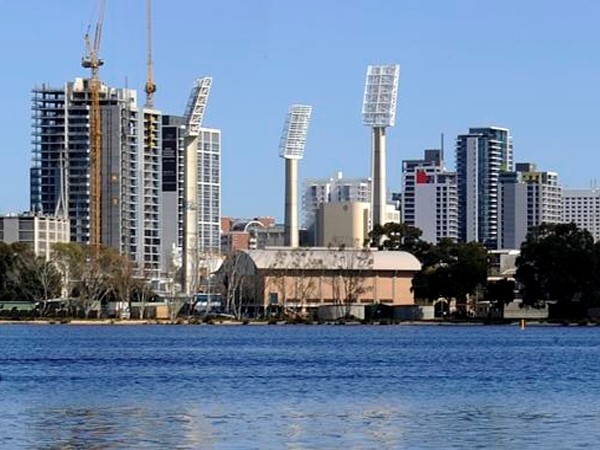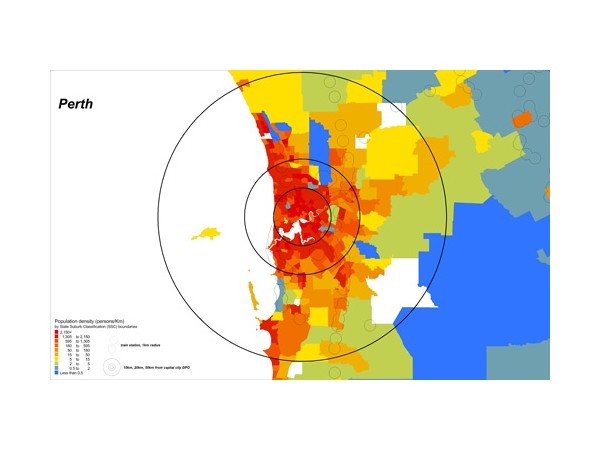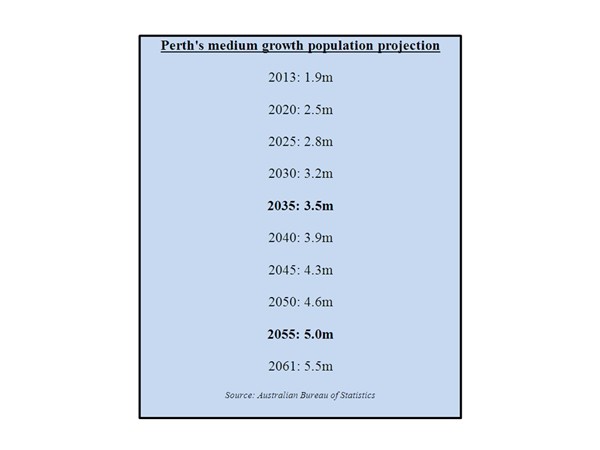High-profile think-tank The Committee for Perth estimates that at least 3.9 million people will inhabit Perth by 2050. This explosive growth, they say, should be a “game changer” in how the western city in planned.
Perth’s population reached 1.9 million in 2012, and it is estimated that this number surpassed the 2 million mark in 2013.
Although population growth is not necessarily a problem, The Committee paints a bleak picture of this rapid increase, showing that if Perth continues on with “business as usual”, the city’s urban footprint will nearly triple to an estimated 15,700 square kilometres when the population reaches 5 million people.
This footprint will exceed that of Tokyo today, but with the city only just one seventh of Tokyo’s population.
In addition,
-
Congestion will increase journey times by an average of 180 per cent across the day, and 300 per cent in peak periods. A commuter currently spending one hour each way getting to and from work during peak periods will spend nearly three hours;
-
There will be four to five million vehicles in Perth, meaning the city will have 15 per cent more cars than are in London today, but 50 per cent fewer people;
-
House prices will rise to more than 16 times the median income (up from 3.9 times in 2000, and 6.5 times today);
-
An additional 30,636 hectares of bush land will need to be cleared; and
-
More than three million people will live more than 20km from the CBD

According to the Australian Bureau of Statistics, 5.5 million people will live in Perth by 2061, as compared to 8.6 million people in Melbourne, 8.5 million in Sydney, and 4.8 million in Brisbane.
Committee for Perth CEO Marion Fulker says that these figures mean Perth potentially has less than 40 years to more than double its number of houses, roads, public transport, hospitals, schools and services than have been built in the region over the past 185 years.
"As a region we have been blindsided by the rapid population growth in the region over the past decade. We have collectively continued operating on a business as usual pathway, when reality has been anything but," she says.
However, Fulker adds that the future is still in Perth’s hands. With good planning and design, Perth can maintain its status as one of the world's most liveable cities.
Key to achieving a less car-dependent city and reducing congestion is the development of an integrated public transport system across the metro area.
The expansion of the city's railway system already demonstrates how growth can be capitalised to improve a city, Professor Peter Newman, director of the Curtin University Sustainability Institute, says.

At the same time, representatives of WA’s property development industry and the WA branch of the Urban Development Institute of Australia say it is crucial for employment opportunities to be created near new committees that are fast growing to the north and south, especially as the CBD no longer remains the city’s sole hub.
It is also time to embrace new ways of living by providing a wide range of housing choices in the inner and middle ring suburbs to stem the urban sprawl.
“Growth is something to be feared if you just let it overwhelm you, but it’s something to be welcomed if you take the opportunities and put them to use in creating a better future,” Professor Newman tells Perth Now.

The Department of Planning released its Directions 2031 and Beyond report in 2010, providing a planning framework for what the State needs to do to cope with the predicted population growth. However, a number of new planning documents are in the works that will build on the strategy, including a new vision for Perth and Peel.
Three sub-regional structure plans for the north-east, north-west and south metropolitan and Peel regions are expected to be released for public comment in 2014.
Images: sourceable.net

